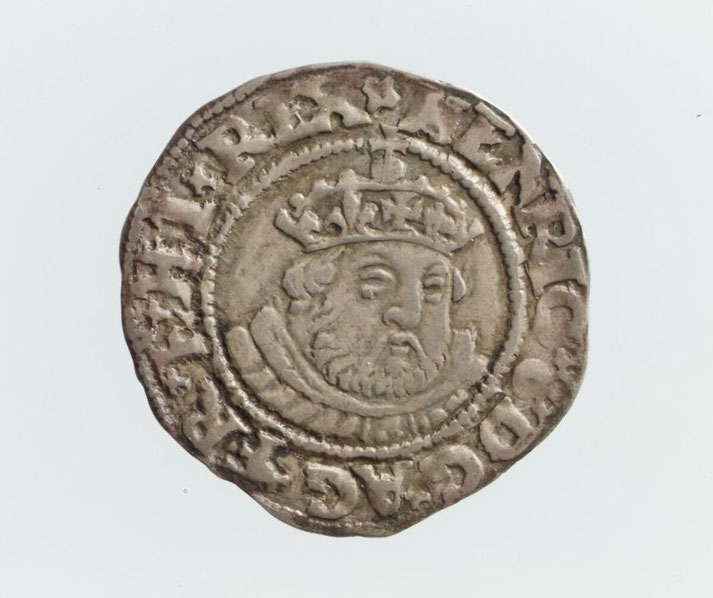The heartbreaking life of Anne of Cleves, Henry VIII's "ugly wife"

Anne of Cleves became one of the most unusual figures in the history of Henry VIII’s marriages, and she wore the crown of England for only six months in 1540 before her marriage ended in annulment.
Writers at the time described her as plain, and Henry expressed open disgust at her appearance. Her sad story tells of a young noblewoman who left her homeland in Germany to marry a powerful king, yet endured humiliation when he rejected her at their first meeting.
Anne's life before Henry VIII
Anne was born on 22 September 1515 in Düsseldorf, and she was the second daughter of John III, Duke of Cleves, and Maria of Jülich-Berg.
Her father controlled the regions of Cleves, Jülich, Berg, and Mark, and he promoted moderate Protestant reforms while also keeping ties with the Catholic Church.
She grew up in a household that valued traditional female accomplishments, and her education focused on household skills, needlework, and religious devotion.
Anne could read and write in German but lacked the courtly education in languages and music that many noblewomen in France or England received.
Foreign visitors described her as modest and gentle, and she lived a quiet life at court with few opportunities for political influence.
Her brother Wilhelm inherited the duchy in 1539, and he quickly entered an argument with Emperor Charles V over the duchy of Guelders.
England had become isolated after Henry’s break with Rome in 1534, and the growing strain between Cleves and the Habsburgs created an opportunity for a partnership that could strengthen Henry’s position in Europe.

The marriage negotiations with Henry VIII
Thomas Cromwell, Henry’s chief minister, led the marriage discussions because he wanted to align England with the Protestant states of Germany.
In 1539 he sent Hans Holbein the Younger to paint portraits of Anne and her sister Amalia so that Henry could judge their appearances.
Holbein’s portrait showed Anne with delicate features and fine clothing, and Henry declared that he approved of her as a potential queen.
The marriage treaty was completed in October 1539, and the agreement included a dowry of 100,000 florins.
Henry prepared to meet his bride in December of that year. He believed that she would look as attractive as the portrait suggested.
Cromwell viewed Anne as a willing woman who would make an obedient wife and who would not interfere in matters of politics.

The cruel events when Henry first met Anne
Henry travelled to Rochester on 1 January 1540 to meet Anne, and he chose to follow the chivalric custom and approached her in disguise.
He expected that she would recognise him as her future husband and greet him warmly.
However, Anne failed to recognise him and reacted with indifference to the unknown man who entered her chamber, which left Henry feeling humiliated and insulted.
Henry complained bitterly to Cromwell that Anne looked nothing like her portrait, and he called her “a great Flanders mare.”
Even though he felt strong unhappiness, Henry honoured the treaty and married Anne at Greenwich on 6 January 1540.
He refused to complete the marriage and told his courtiers that he found her physically unappealing.
By June 1540 he had decided to annul the marriage, by citing the lack of consummation and citing a supposed pre-contract with Francis of Lorraine as reason.
Anne's life in England after the annulment
Anne accepted the annulment without protest, and Henry rewarded her with a generous deal that covered Richmond Palace, Hever Castle and several manors.
He granted her the honorary title of “the King’s Beloved Sister,” which gave her priority over every woman in England except the queen and Henry’s daughters.
She adjusted quickly to her new life and became a familiar figure at court. Anne attended royal ceremonies.
She was even present at the coronations of Catherine Howard and Catherine Parr, and she maintained warm relationships with Henry’s daughters Mary and Elizabeth.
Courtiers described her as cheerful and kind, and she never remarried nor attempted to involve herself in political affairs.
Henry VIII died in January 1547, and Anne attended the coronation of Edward VI soon after.
She continued to receive her lands and allowance, although she chose to live a quiet life in the countryside rather than remain active at court.
Mary I became queen in 1553, and Anne returned briefly to court to witness Mary’s coronation.
She avoided any involvement in religious or political disputes and preferred to live away from public life during the rest of Mary’s reign.
Anne died on 16 July 1557 at Chelsea Old Manor aged 41, and she became the only one of Henry’s wives to be buried in Westminster Abbey.
Her life revealed both the cruelty of Henry’s rejection and the unexpected comfort that she found after her short reign as queen, for she outlived Henry and every one of his other wives.
What do you need help with?
Download ready-to-use digital learning resources
Copyright © History Skills 2014-2025.
Contact via email
With the exception of links to external sites, some historical sources and extracts from specific publications, all content on this website is copyrighted by History Skills. This content may not be copied, republished or redistributed without written permission from the website creator. Please use the Contact page to obtain relevant permission.





